Tiles or Marble Flooring: Which Is Right for You?
Choosing between marble flooring and tiles is a significant decision that impacts the aesthetics, durability, and maintenance of your space. Both options have their unique advantages and considerations. At Marble Pk, we offer a diverse range of natural stones, including marble, granite, sandstone, limestone, onyx, and travertine, to cater to your specific needs.
Marble flooring is renowned for its natural veining, unique patterns, and a wide spectrum of colors, ranging from pristine whites to deep blacks. Its luxurious appearance adds grandeur to any space. Marble is durable but porous, requiring sealing to prevent stains.
Tiles, being man-made, offer uniformity in design and are available in various textures and finishes. They are less porous, making them more resistant to moisture and stains.

Natural Beauty That Cannot Be Replicated
When it comes to choosing flooring and wall cladding materials for your home or commercial project, the decision often boils down to marble vs. tiles. While tiles have their own benefits, marble stands out as the superior material in several key aspects.
Marble is a natural stone with unique patterns, veining, and color variations. No two marble slabs are ever the same, which means your floor or wall will always have a distinct and premium appearance that cannot be mimicked by tile prints.
Understanding Marble Flooring and Its Alternatives
In Pakistan, terms like “marble floor designs” are commonly used to refer to various natural stone flooring options. These include marble, granite, sandstone, quartz, travertine, onyx, and even artificial stones.
Tiles, on the other hand, are manufactured materials available in ceramic, porcelain, and other variants. They offer a wide range of designs, are cost-effective, and require less maintenance compared to natural stones.
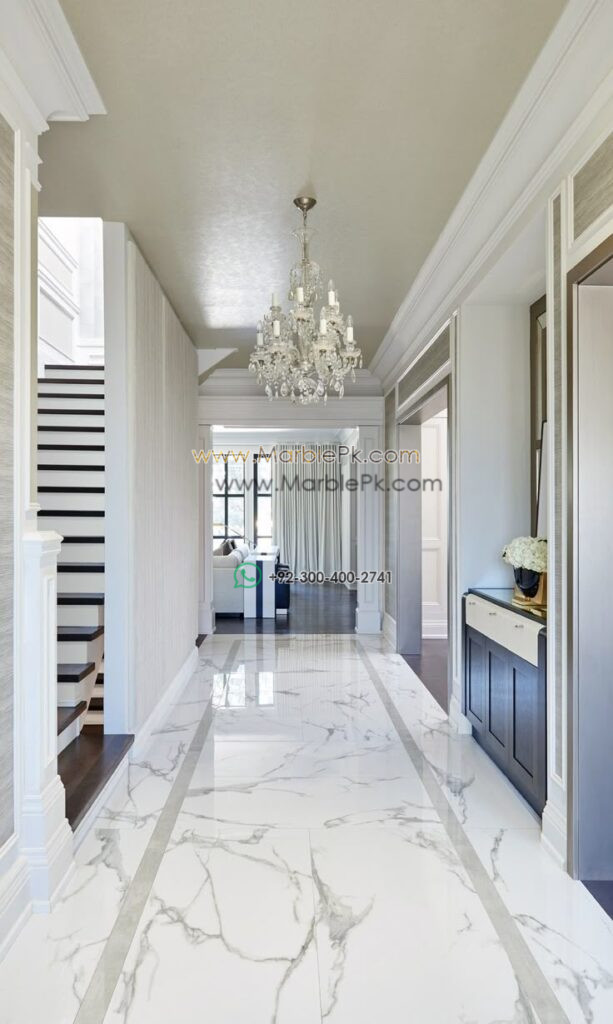
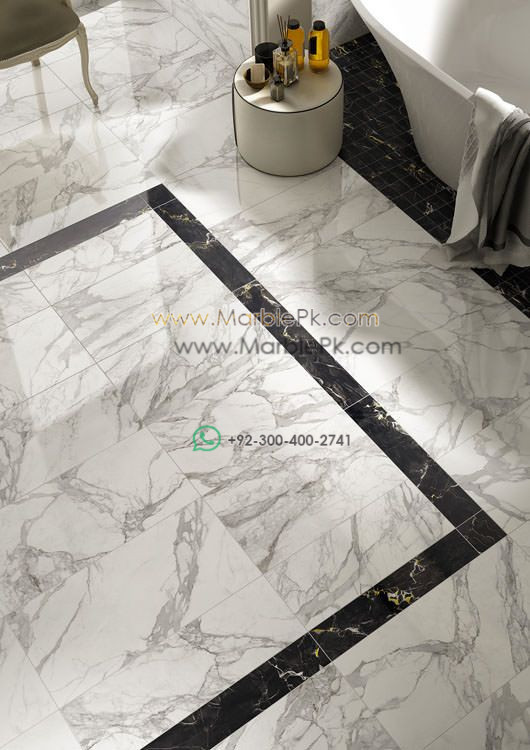
Natural stones like marble are versatile, suitable for both luxurious and casual settings. They are commonly used in commercial spaces like hotels and malls, as well as in residential projects.
Tiles are equally adaptable, fitting seamlessly into kitchens, bathrooms, and living areas, offering both functionality and style.
Origins and Availability
Marble and other natural stones are either extracted from Pakistan’s rich mountainous regions or imported from countries like Italy, Turkey, and Spain. Within Pakistan, provinces such as Punjab, Khyber Pakhtunkhwa, and Balochistan are known for their high-quality marble quarries.
Tiles are predominantly manufactured domestically, with some high-end variants imported to meet specific design requirements.
Aesthetic and Physical Properties
Marble flooring is celebrated for its unique veining, natural patterns, and a palette ranging from pristine whites to deep blacks. Its polished surface reflects light, enhancing the brightness of interiors. However, marble is porous and requires regular sealing to prevent stains.
In contrast, ceramic tiles offer a vast range of colors and designs, are non-porous, and require less maintenance, but may lack the natural charm of marble.
Versatility in Applications
Marble’s grandeur makes it suitable for both luxurious and casual settings. It’s commonly used in commercial spaces like hotels and malls, as well as in residential projects.
Tiles, with their durability and design versatility, are also favored in various settings, from high-traffic commercial areas to cozy home interiors.
Durability and Maintenance Comparison
While marble flooring exudes elegance, it requires diligent maintenance to preserve its appearance. Regular sealing and polishing are essential to prevent stains and scratches.
Tiles, especially glazed ones, are more resistant to stains and scratches, making them a practical choice for areas prone to spills and heavy foot traffic.
Advantages and Disadvantages
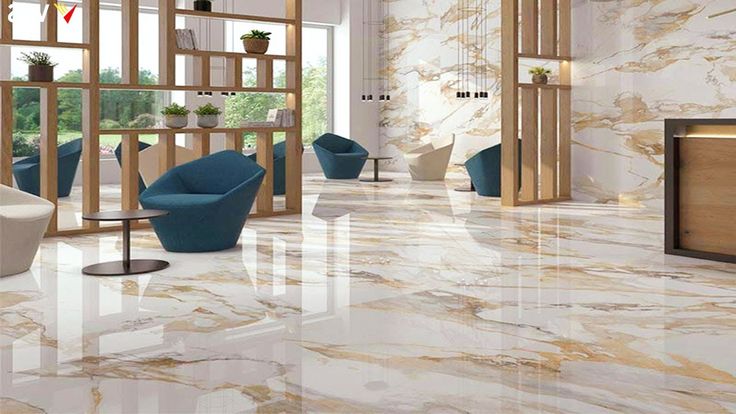
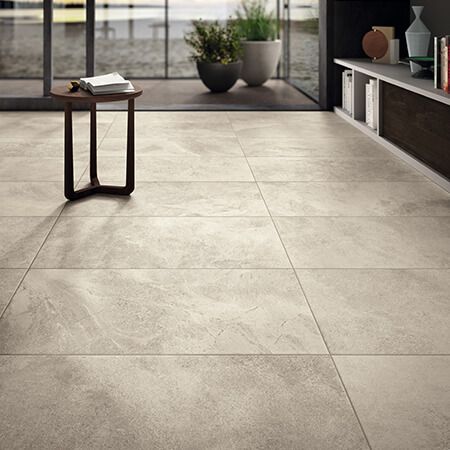
Advantages of Marble Flooring
Unique and luxurious appearance
Adds value to properties
Natural cooling properties
Durable with proper maintenance
Disadvantages of Marble Flooring
Requires regular sealing and polishing
Susceptible to stains and scratches
Higher installation and maintenance costs
Can be slippery when wet
Advantages of Tiles Flooring
Wide range of designs and colors
Low maintenance and easy to clean
Cost-effective
Durable and water-resistant
Disadvantages of Tiles Flooring
May lack the natural elegance of marble
Grout lines can accumulate dirt
Can feel colder underfoot
Visual Showcase of Pakistani Marble
Pakistan boasts a rich variety of marble, each with distinct characteristics:
Ziarat White Marble: Known for its pure white color and fine texture, ideal for creating a sense of space and brightness.
Badal Grey Marble: Features a blend of grey tones with subtle veining, offering a contemporary look.
Tavera Marble: Exhibits beige hues with consistent patterns, suitable for both traditional and modern interiors.
Botticino Fancy: Characterized by its creamy background and delicate veining, adding warmth and elegance to spaces.
These marbles are showcased in our “materials-colors” category, providing a glimpse into the natural beauty Pakistan’s quarries offer.
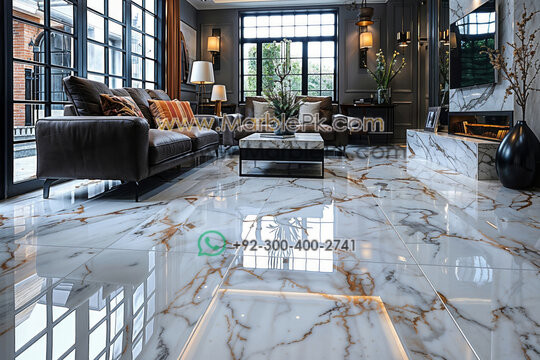
Pricing and Services
The cost of marble flooring varies based on factors like thickness, finish, size, and quantity. Prices also differ across cities due to transportation and local market dynamics. At Marble PK, we offer competitive pricing without compromising on quality. Our services include not only supplying premium marble but also providing professional installation to ensure a seamless experience for our clients.
Conclusion: Which One Should You Choose?
Choose Marble if you want natural elegance, luxury, and a classic look that never goes out of style.
Choose Tiles if you’re looking for durability, ease of maintenance, affordability, and design flexibility.
Both materials have their strengths—your choice should depend on budget, usage area, aesthetic preference, and long-term goals.
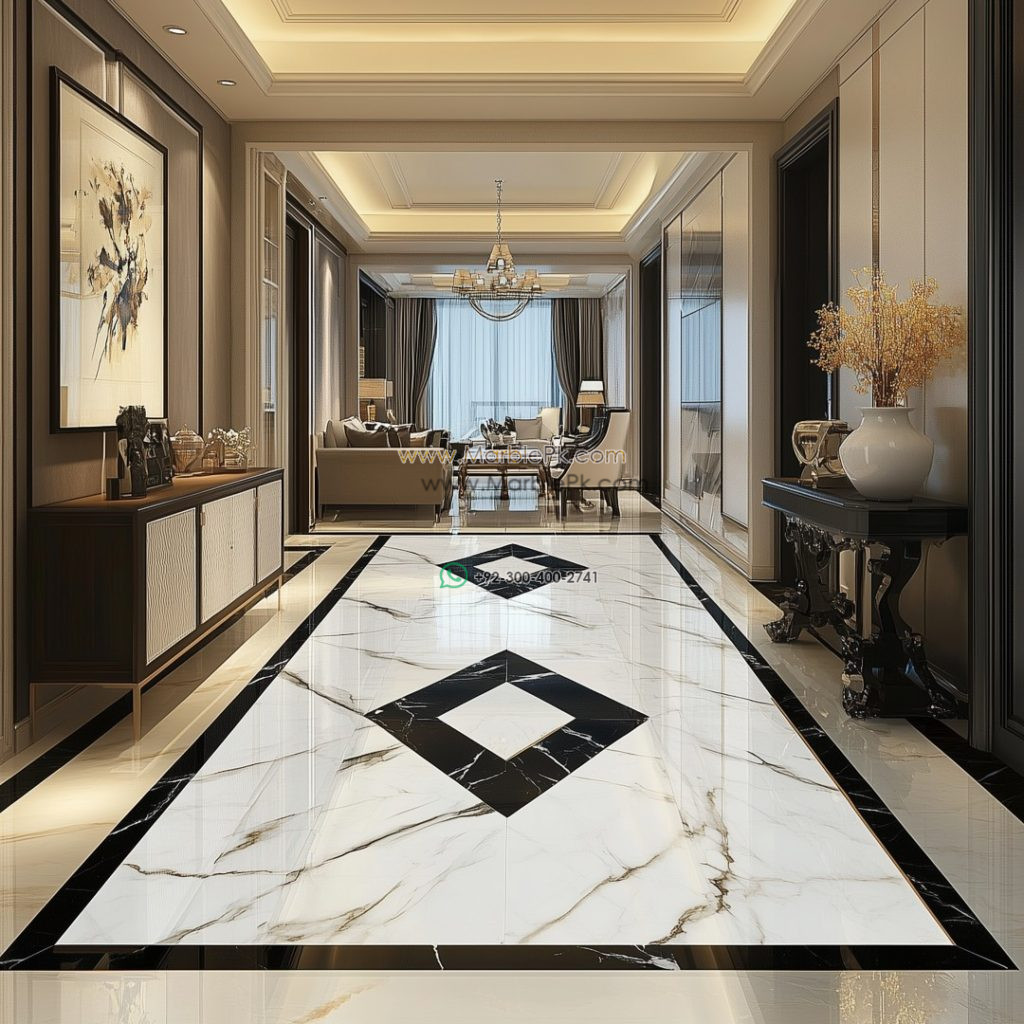
Nationwide Availability and International Exports
We proudly serve major cities across Pakistan, including Lahore, Islamabad, Karachi, Quetta, Peshawar, Faisalabad, Gujranwala, Multan, Sialkot, Rawalpindi, Hyderabad, Sukkur, Bahawalpur, Sargodha, Abbottabad, Mardan, Swat, Muzaffarabad, Mirpur, Gilgit, Skardu, Chitral, Gwadar, Dera Ghazi Khan, Rahim Yar Khan, Sahiwal, Okara, Sheikhupura, Jhelum, and Gujrat.
Beyond our national reach, Marble PK exports high-quality marble to international markets, including the USA, UK, Canada, various European countries, and Gulf nations such as Bahrain, Kuwait, Iraq, Oman, Qatar, Saudi Arabia, and the United Arab Emirates.
Explore More: International Resources on Marble and Tile Flooring
For further insights into marble and tile flooring, consider exploring these reputable international resources:
Better Homes & Gardens: Porcelain vs. Ceramic Tile: A comprehensive guide on the differences between porcelain and ceramic tiles.
Architectural Digest: Kitchen Floor Ideas: Design inspirations and considerations for kitchen flooring.Southern Living
Real Simple: Types of Tiles: An overview of various tile types and their applications.
The Spruce: Marble Flooring Pros and Cons: An in-depth look at the advantages and disadvantages of marble flooring.blog.coloradostonequarries.com+1rkmarble.com+1
Lowe’s: Tile vs. Marble Floors: A buying guide comparing tile and marble flooring options.Lowe’s

Frequently Asked Questions
1. Which is better for flooring: marble or tiles?
It depends on your needs. Marble is better for a luxurious, high-end look, while tiles are more practical for durability and low maintenance in high-traffic or wet areas.
2. Is marble more expensive than tiles?
Yes, marble is usually more expensive due to its natural origin, extraction process, and finishing. Tiles are generally budget-friendly and widely available in various price ranges.
3. Why is marble considered more luxurious than tiles?
Marble is a natural stone with unique veining and rich patterns, giving it an unmatched luxurious and high-end feel. Tiles may mimic marble’s look but can’t replicate its authentic beauty and depth.
4. Does marble last longer than tiles?
Yes, when properly maintained, marble can last for decades, even centuries, as seen in historical architecture. Tiles are durable but may chip or lose luster over time, especially in high-use areas.
5. Can tiles look like marble?
Yes, many porcelain and ceramic tiles are designed to mimic marble. While they offer similar visuals, they don’t match the natural depth, feel, and uniqueness of real marble.
6. Is marble suitable for kitchens and bathrooms?
Marble can be used in these spaces, but it’s more vulnerable to staining and etching. Tiles are more recommended for wet or high-usage areas due to their water resistance.
7. Is the natural look of marble better than the printed design of tiles?
Many people prefer marble’s organic and non-repetitive patterns, which offer a sense of uniqueness. Tile patterns are usually printed and repetitive, reducing the natural aesthetic.
8. Can marble help with room temperature control?
Yes. Marble stays naturally cool, making it ideal for hot climates. Tiles can also be cool, but marble’s thermal conductivity gives it an edge in comfort.
9. Which one adds more value to a home: marble or tiles?
Marble often adds more resale value and prestige due to its natural and luxurious appeal. Tiles are valued for practicality but may not provide the same high-end perception.
10. Can I use both marble and tiles in the same home?
Absolutely. Many modern homes combine both—using marble in living rooms or staircases, and tiles in kitchens, bathrooms, and outdoor areas for functionality.
Contact us ....
- Call / WhatsApp: +92-300-400-2741
- Landline: +92-423-7170484
- Email: [email protected]
- Live Chat: Click the WhatsApp icon at the bottom-right of our website marblepk.com for live assistance and product inquiries.
House of Stone-tists..
All rights reserved